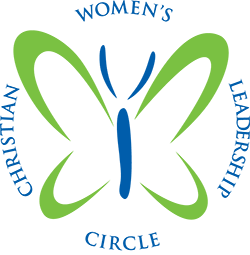iGEM Summer Camp 2015
Sierra Tackett, senior biochemistry major, is one the 2015 recipients of the Sharon A. Schoeneck Christian Women’s Leadership Scholarship. Sierra coordinated the week-long 2015 summer camp hosted by WLC’s International Genetically Engineered Machines (iGEM) competition team and shared her reflections on the camp in the guest post below. An outstanding student with a servant-leader heart, Sierra is a wonderful example of the students you assist with your scholarship support. MONDAY
Today started off with a discussion around Science and Religion. We are a small, private, Christian institution, and as such feel that we have a unique opportunity to talk about synthetic biology and bioengineering with those who may at first think that it is not Science and Religion, but Science versus Religion. One of our leaders, Mr. Nickels, who has a background in Christian and public education was able to share a unique perspective of how we, as scientists, can still be both strong in faith and in science. This was the perfect way to set the tone for the rest of our summer camp as we deal with basic biology but also address some controversial topics.
We then delved into the Central Dogma of Biology. This was no ordinary lecture! Mr. Nickels brought candy! Students were able to learn about the structure of DNA, RNA, and tRNAs using licorice, marshmallows, and Oreos. A tasty time was had by all!
IGEM3
After lunch was lab time. We gloved up to learn how to use some of the basic lab equipment and techniques. Students learned to “pipette” (see photo at right) and put those new skills to use by making a “liquid culture and mini prep.” Campers were able to culture their own bacteria and learned the important conditions necessary for doing so. We then took bacteria and isolated their DNA using some of these skills.
At day’s end we discussed what iGEM (International Genetically Engineered Machines) is all about—sharing a teamwork attitude and an excitement for science. We introduced the project for the week—reviewing a past iGEM project and make a presentation to present to the rest of the camp students so they can understand it too! We mapped out all of the components of a tip-top iGEM project: a website, consideration of policy and practices, and of course, the science! Groups decided their interests right away and selected a past team’s work to review for the week. It was a great day!
TUESDAY
Today was a busy day! We began a review of proteins and chemical bonding. Then it was off to the Milwaukee School of Engineering Biomolecular Modeling lab. MSOE students explained the principles of water with magnetic models so the students could feel the difference between hydrogen, ionic, and covalent bonding. Later, we had the opportunity to build a peptide bond and before we knew it, we built a long polypeptide chain!
We also were able to view the large 3-D printers that they use to make larger-scale models. This helped us to understand some of the smaller-scale science that we are performing in the labs at WLC—it really came to life for the students.
Back at WLC, Dr. Werner walked us through the basics of genetic engineering before we went back to the labs. The students used the plasmids and mini-prep they isolated on Monday to make bacteria glow red. We will see how this fared tomorrow! Finally, the students spent time hard at work on their group projects to make a presentation to share past iGEM projects with each other.
WEDNESDAY
After laying a good foundation Monday and Tuesday, we began the day discussing viruses and medical microbes. Students learned the difference between viruses, bacteria, and how these organisms wreak havoc on our bodies. We reviewed articles found on the internet and discussed their strengths and weaknesses. Being knowledgeable about reading scientific literature is important! In lab, we saw that our attempts to make bacteria red were successful!
Later, Dr. Henkel led us on an investigation as we learned how we detect bacteria with differential media. Students took samples from various places: the bathroom floor, their armpits, and anything else that they wished to swab to determine what type of bacteria was growing. Tomorrow, we will see what types of organisms are lurking in places that we touch every day. Students continued working on their group projects and began to craft their presentations.
THURSDAY
Hard to believe it is Thursday already! Now that we knew about viruses, bacteria, and their medical implications, we were ready to learn about biosafety and biowarfare. Dr. Henkel shared his experiences and expertise with dangerous organisms. We then discussed how we fight these organisms with antibiotics. However, camp instructors did not miss a beat to discuss antibiotic resistance and the implications of overuse.
The results of yesterday’s investigation with bacteria were in! We saw beautiful bacteria on our plates and were able to identify what we grew! Looks like railings make a great home for bacteria! Then it was the last day to work on presentations. Students were able to practice on the projectors to prepare. Tomorrow is show time!
FRIDAY
Today was the busiest of our days yet! We spent the morning polishing presentations and playing a game of jeopardy reviewing the week’s topics. We enjoyed lots of laughs and learning some things that we may have forgotten!
In the lab, Matt showed us how to run a “gel electrophoresis” where we were able to separate DNA and confirm that our previous week’s experiments were successful. We took some strains of bacteria and stained microscope slides to visualize them. It was exciting to see our tiny friends that we had been working with all week!
Later, I spoke to the students about how we are able to genetically engineer organisms like yeast, rats, and even our own cells. Students viewed HeLa cells, the immortal cell line that originated from the cervical cancer cells of Henrietta Lacks. It was incredible to see human cells! Summer campers had some free time to explore different human tissue samples with the light microscope as well as learn how we make slides to see the incredible structures of these tissues.
Finally, it was time for presentations! Camp instructors were impressed as students spoke about past iGEM projects and explained their results. They shared their own creative ideas about how to spread the awesome knowledge of bioengineering. We finished camp with a grill out and said our last goodbyes. It was truly an awesome week, filled with learning, fun, and biology.
For more information on these and other majors offered at Wisconsin Lutheran College, visit wlc.edu/academics



